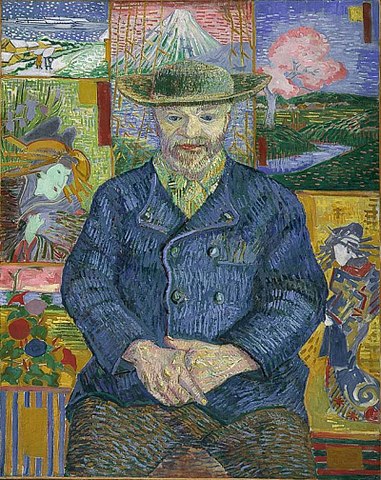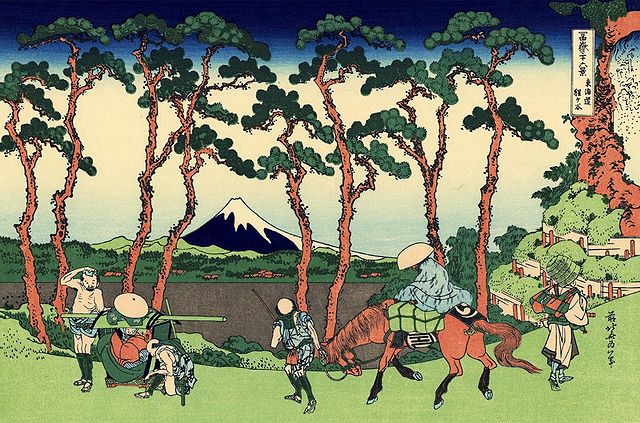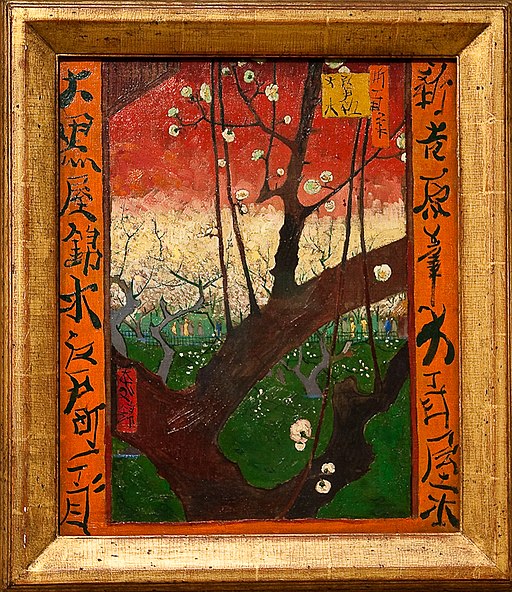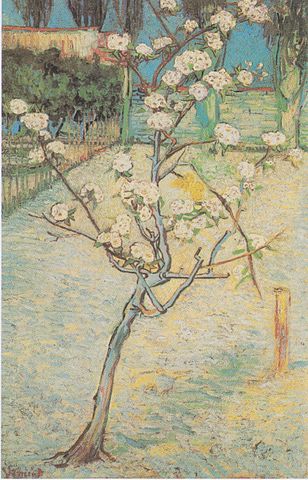The Emergence of Artistic Interest Towards the Orient.
The first in a series of articles about the influence of Oriental and specifically Buddhist ideas on Western art.

Portrait of Pere Tanguy by Van Gogh... By Musée Rodin, Public Domain,
A number of years ago, I was given the gift of a book, Smile of the Buddha, by Jacquelynn Baas. The subtitle is: Eastern Philosophy and Western Art from Monet to Today. When I was asked to speak recently at the Buddhist Society on Buddhism in Western art, I reached for this book as the basis for the talk.
Although Buddhist texts were becoming available in the mid-nineteenth century, they were very much the preserve of linguists and scholars of ancient languages; the content of the texts was often of less interest than the languages themselves. Buddhism’s influence on Western culture really started to intensify when it attracted the interest of small groups of Western intellectuals who began writing on the subject. Some philosophers such as Schopenhauer picked up on Buddhism very early, and this, in turn, influenced the philosophers of the German Idealist school. (It might come as a surprise to know that Wagner was planning the writing of an opera on the life of the Buddha before he died.)
Something very different started happening with the opening up of Japan, when free trade was imposed on the country by Commodore Matthew Perry. Suddenly, a huge amount of Japanese art became available in Europe.

36 Images of Mount Fuji by Hiroshige No. 23… By http://visipix.com/index.htm, Public Domain,
In the first image, we have one of Hiroshige’s series of woodblock prints titled Thirty-six Views of Mount Fuji. These images have become stereotypically ‘Japanese’, but at the time they were created, they were revolutionary. We’ve become used to seeing them on chocolate boxes and biscuit tins; yet, when Western artists saw these prints for the first time, they were considered absolutely extraordinary. They had a considerable influence on the entire artistic community that came into contact with them.
Vincent Van Gogh was probably one of the artists most influenced by Japanese art, even though his style is considered very distinctive. In his portrait of the art dealer Julien Tanguy, you can see one of Hiroshige’s prints in the background. Van Gogh would visit Tanguy to try and sell his paintings. Instead, he would often end up buying one of these Japanese prints, and never actually sold one of his paintings to this man. Van Gogh, at one time, actually owned almost all of these Hiroshige prints, and made copies of a lot of them.

Flowering Plum Tree (After Hiroshige) by Van Gogh
Flowering Plum Tree (After Hiroshige) is one of Van Gogh’s copies of Hiroshige prints, painted in 1887, and is one of his first departures from his usual style of painting. His attempts at rendering the Japanese calligraphy are not very accurate, however, as he had never studied the correct way to form the characters.

Pear Tree in Blossom (1888)… Van Gogh
One year later, Van Gogh produced pictures such as Pear Tree in Blossom (1888). The style is very much Van Gogh’s, but he appears to have taken a tree from the background of a Hiroshige print and brought it into the foreground.
Van Gogh might not strike you as a being a Buddhist, but he was very taken with the principles of Buddhism, and read a lot of books on the subject. He seemed to understand these pictures intuitively. For example, most of these types of woodblock prints do away with perspective, so it is very difficult to understand who the observer is; there is almost no ‘observer’s eye’. You could not stand anywhere and see one of those scenes in real life. This is something that really struck the perspective-educated Western artists; the pictures were about something other than the ‘eye of the artist’.
Van Gogh was also influenced by writers who were themselves influenced by Buddhism, so he read, for example, Wagner’s writings on Buddhism. Tolstoy – upon whom Buddhism had made an impression – was another favourite of his. Buddhist thought and art became, for Van Gogh, even more of an inspiration as he matured. He never attempted to produce exact copies of Japanese styles, but nor are these paintings anything like the work of his Western contemporaries – or, in fact, anyone who came before.
..........................................................
Text copyright to Michael O’Neill




